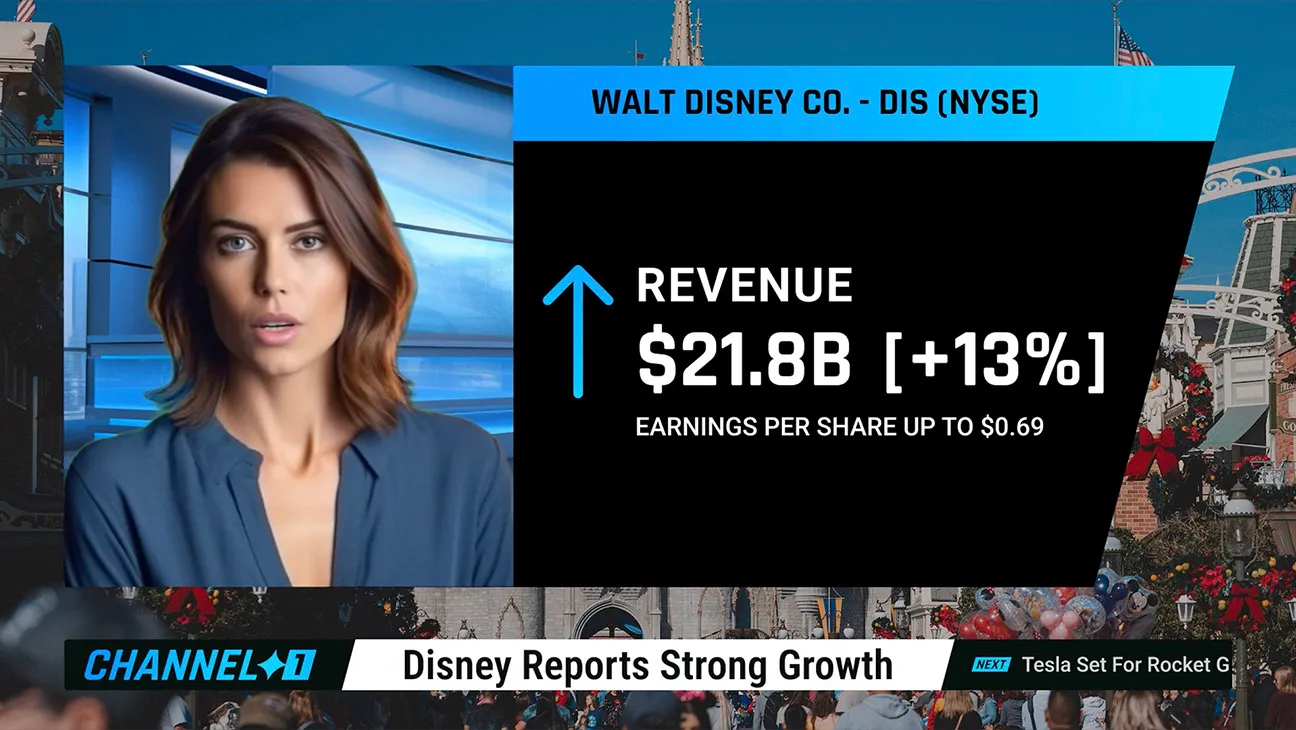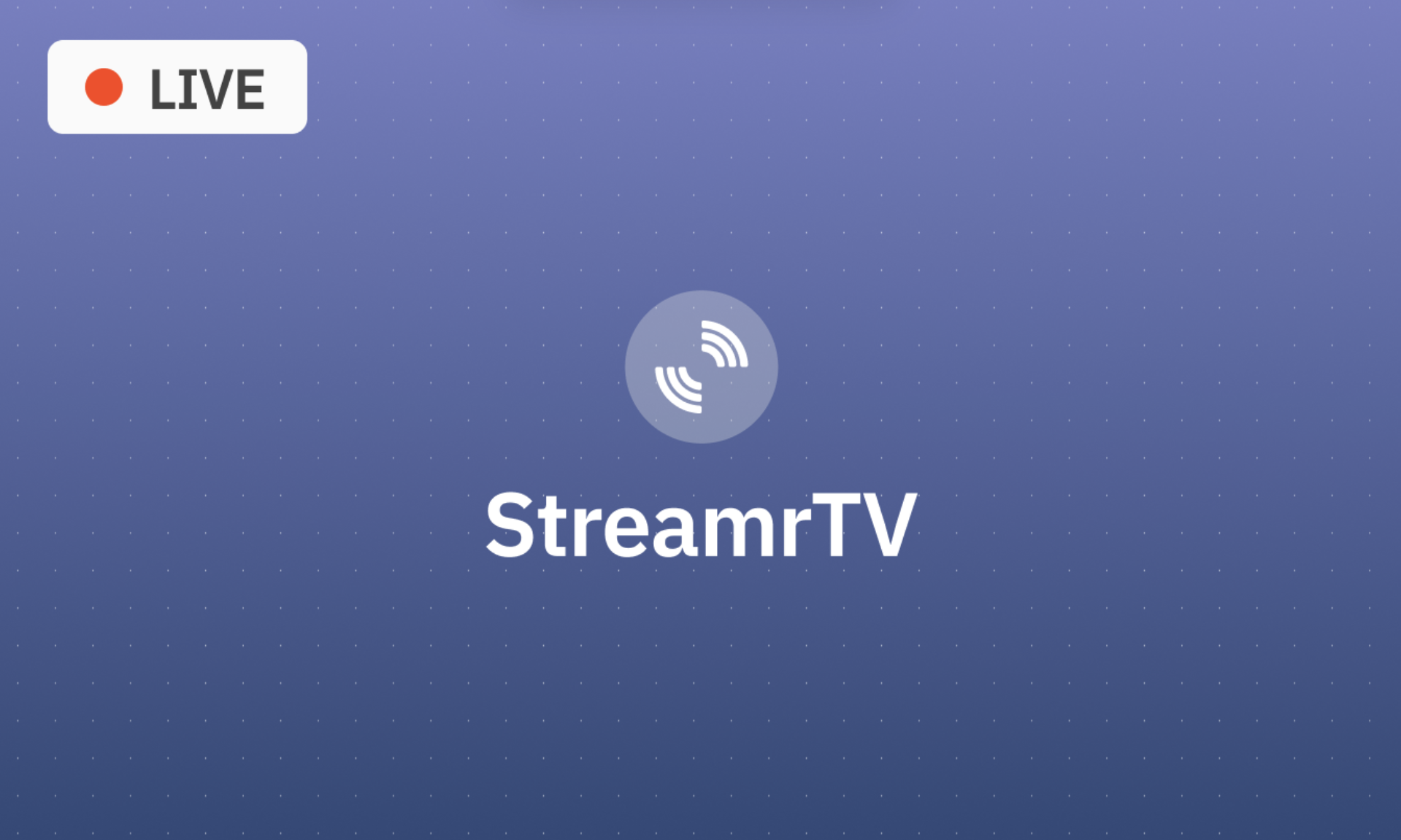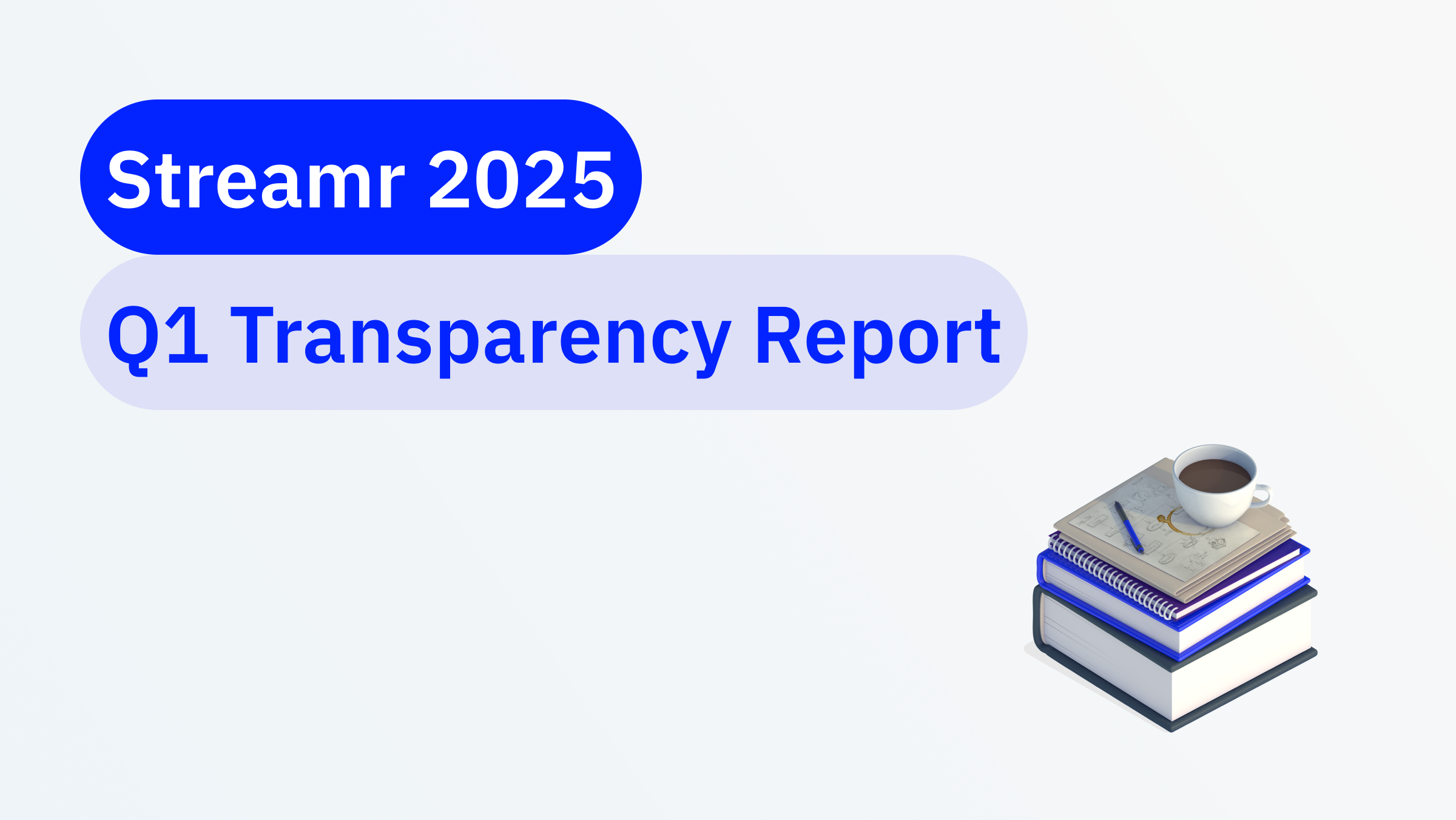What happens when artificial intelligence (AI) joins forces with Streamr– the unstoppable real-time data network? In this post, we’ll walk through the fundamentals of how the next generation of AI will need Streamr, and we’ll speculate on the most impactful Streamr/AI integrations likely to get traction in 2024.
Table of Contents
The AI market fit
Let’s start with the fundamentals. Streamr has three main points of contact with AI:
- AI x Streamr real-time tuning data
- AI x Streamr live content distribution
- AI x Streamr decentralized communications
In other words, the Streamr protocol works with AI by delivering data to, from, and between AI models and agents using the secure and hyperscalable Streamr Network.
AI needs data, lots of it, and fast!
Researchers have warned that AI may run out of data by as early as 2026. Streamr can help to solve the data shortage by connecting AI systems with open and pay-to-access real-time data streams. AI systems can crawl and scrape the Streamr Network much like the open Web, and by doing so, incorporate useful data streams into its training and tuning process. Everything from autonomous vehicles to natural language processing will require immense amounts of real-time data to make AI smarter for the next prompt, meaning that Streamr is well positioned as a key input for future AI systems.
Beyond using real-time data as an input for training, generative AI systems are able to enrich and publish new data streams back to Streamr, for profit. These generative AI data streams could be predictive, insightful or entertaining. For example, the AI might publish a stream that predicts the price of gold tomorrow, or create a piece of derivative art content that’s viewed by millions.
…The decentralized market may well end up being dominated by machine-to-machine transactions…. Automatic, value-adding refinement patterns will emerge. An AI might subscribe to a raw stock market feed, apply proprietary pattern recognition to generate trading signals, and offer those signals for sale on the same data market.
The AI data enrichment pipeline predicted in the original 2017 Streamr Whitepaper
AI generated content needs P2P distribution
Let’s shift focus from the input of AI systems to their output. Generative AI content may overtake human generated content in the next few years. The nature of AI generated video content aligns with Streamr particularly well due to its intensive bandwidth requirements. Not to mention that the largest cloud operators can’t even handle the bandwidth requirements for video streaming today! With the help of Streamr and its node operators, live media streaming can scale P2P, rather than through expensive data centers. In other words, with the coming torrent of AI generated streaming content, Streamr offers a P2P solution to prevent overload on centralized platforms.

Beside the urgency towards rebuilding video streaming pipelines, AI will begin to disrupt how video content is encoded, transcribed, summarized and analyzed. These AI features may come all-in-one, from closed platform products, or, they may come from a diverse set of open source Web3 protocols that work together to outcompete the monoliths. For example, LivePeer encoding could be combined with Streamr distribution for end-to-end P2P delivery.
AI generated video streams can also reflexively draw from Streamr’s real world data. Imagine an AI generated news broadcaster that ingests real-time data about the world (by subscribing to Streamr streams), summarizing and translating the content back to Streamr, for different audiences. Is your AI generated talking head getting too political? Why not play a steering role in their output by streaming back your reactions to fine tune your news stream experience. You’re in control when you adopt open protocols.

AI Regulation
Regulations will play a key role in the ushering in of AI technologies. While AI models are commonly touted as “black boxes”, their outputs can be rigorously tested for bias and manipulation. This is where a verifiably secure protocol like Streamr can ensure that the AI models attest with their cryptographic signature, the validity of their output. Perhaps even citing the cryptographic proofs from their own training data that was weighted towards their generated output. Holding AI models accountable for their output will go a long way towards trusting sensitive tasks to them.
Decentralized AI communication
Aside from Streamr’s role as the data input and output protocol for AI, there is an even more impactful role for Streamr inside AI systems. To explain at a high level; a set of diverse and specialized AI models has the potential to outcompete a single, more powerful monolithic model. Inside these multi-model AI systems there could be a Large Language Model (LLM) that messages its LLM colleagues to ask which of them is most suitable to answer the user prompt. Leveraging this sort of collective councilled intelligence requires real-time routing and coordination. Streamr can provide this secure and verifiable messaging layer inside these collective intelligence AI systems.
While we won’t get into the deep nuances of what it means to have completely decentralized AI, an expected proliferation of these specialized AI models that anyone can run is a big step towards this reality. In the decentralized AI paradigm, the Streamr network offers a neutral, secure, and scalable data layer capable of pushing, pulling, and coordinating data in ways that match with the capabilities of AI models and agents. Real-time verifiable and trustless communication can provide decentralized AI with an unfair advantage against any centralized monolithic AI model.
The Streamr AI use cases for 2024 and beyond
What will the first Streamr/AI integrations look like? Here are some concepts for the future that we look forward to seeing in the Streamr ecosystem. The Streamr developer community is best positioned to build the next generation of decentralized AI technologies with the full support of the Streamr core team and its grant funding.
- Streamr node AI plugin– Extend your Stream node with an LLM or Stable diffusion model to fan out your generated content. Input and output streams for prompts and generative content.
- AI marketplace– The Streamr Hub has 90% of the features for an AI marketplace already. Instead of offering a collection of pay-to-access subscription to data streams, the smart contracts could be extended to allow for publishing prompts to get access to the output of a pay-to-access remotely run model.
- AI video distribution– Stream any AI generated media over a P2P network like Streamr.
- LLM routing– Connect and coordinate prompts among specialized AI models over streams.
- AI Chat– The Streamr powered Chat App integrates with ChatGPT or with any number of AI models for that matter, in other words, group chat with a council of wise wizards.
- Verifiable AI– Eliminate the doubt– deep fakes aren’t a thing when every pixel and data point are cryptographically signed at the source using Streamr.
- AI Audits– Transparency and safety are pivotal; thus, AI needs to publish real-time metrics demonstrating adherence to guidelines and ethical guardrails.
- AI data crowdsourcing– the Streamr Data Union framework allows individuals to broadcast their data into a single consumable stream, and earn rewards for their contributions. AI researchers could therefore incentivise collection of unique data from individually owned devices for the purpose of AI training or research.
While there’s a lot to unpack here, we have only just scratched the surface. AI will disrupt virtually everything as the transaction cost to think and create has been dramatically reduced like never before. Streamr exists to extend the open Internet with a powerful yet ethically minded data protocol. If AI merges with Streamr, then there’s every chance that the value that AI generates will not end up in the hands of just a few billionaires, since after all, there’s no force stronger than the collective power of aligned and incentivized decentralized systems.










